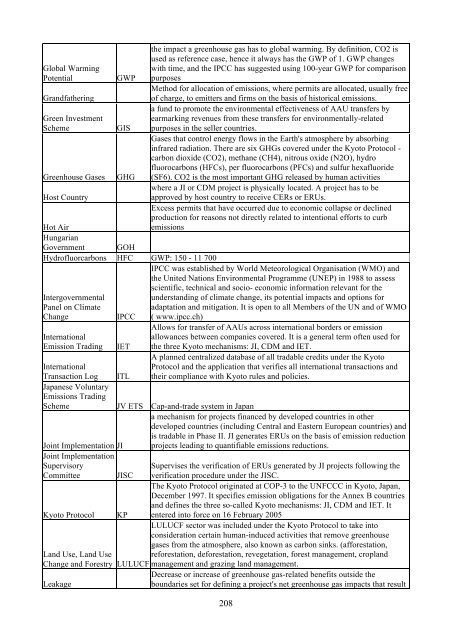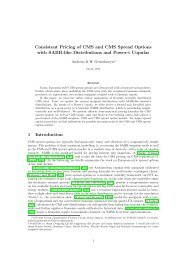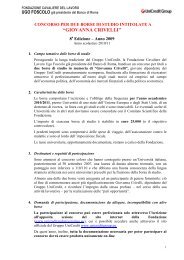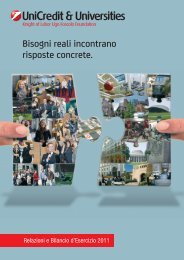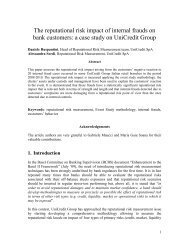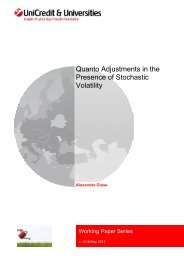Dóra Fazekas Carbon Market Implications for new EU - UniCredit ...
Dóra Fazekas Carbon Market Implications for new EU - UniCredit ...
Dóra Fazekas Carbon Market Implications for new EU - UniCredit ...
You also want an ePaper? Increase the reach of your titles
YUMPU automatically turns print PDFs into web optimized ePapers that Google loves.
Global Warming<br />
Potential GWP<br />
Grandfathering<br />
Green Investment<br />
Scheme GIS<br />
Greenhouse Gases GHG<br />
Host Country<br />
the impact a greenhouse gas has to global warming. By definition, CO2 is<br />
used as reference case, hence it always has the GWP of 1. GWP changes<br />
with time, and the IPCC has suggested using 100-year GWP <strong>for</strong> comparison<br />
purposes<br />
Method <strong>for</strong> allocation of emissions, where permits are allocated, usually free<br />
of charge, to emitters and firms on the basis of historical emissions.<br />
a fund to promote the environmental effectiveness of AAU transfers by<br />
earmarking revenues from these transfers <strong>for</strong> environmentally-related<br />
purposes in the seller countries.<br />
Gases that control energy flows in the Earth's atmosphere by absorbing<br />
infrared radiation. There are six GHGs covered under the Kyoto Protocol -<br />
carbon dioxide (CO2), methane (CH4), nitrous oxide (N2O), hydro<br />
fluorocarbons (HFCs), per fluorocarbons (PFCs) and sulfur hexafluoride<br />
(SF6). CO2 is the most important GHG released by human activities<br />
where a JI or CDM project is physically located. A project has to be<br />
approved by host country to receive CERs or ERUs.<br />
Excess permits that have occurred due to economic collapse or declined<br />
production <strong>for</strong> reasons not directly related to intentional ef<strong>for</strong>ts to curb<br />
emissions<br />
Hot Air<br />
Hungarian<br />
Government GOH<br />
Hydrofluorcarbons HFC GWP: 150 - 11 700<br />
IPCC was established by World Meteorological Organisation (WMO) and<br />
the United Nations Environmental Programme (UNEP) in 1988 to assess<br />
scientific, technical and socio- economic in<strong>for</strong>mation relevant <strong>for</strong> the<br />
Intergovernmental<br />
understanding of climate change, its potential impacts and options <strong>for</strong><br />
Panel on Climate<br />
adaptation and mitigation. It is open to all Members of the UN and of WMO<br />
Change IPCC ( www.ipcc.ch)<br />
Allows <strong>for</strong> transfer of AAUs across international borders or emission<br />
International<br />
allowances between companies covered. It is a general term often used <strong>for</strong><br />
Emission Trading IET the three Kyoto mechanisms: JI, CDM and IET.<br />
A planned centralized database of all tradable credits under the Kyoto<br />
International<br />
Protocol and the application that verifies all international transactions and<br />
Transaction Log<br />
Japanese Voluntary<br />
Emissions Trading<br />
ITL their compliance with Kyoto rules and policies.<br />
Scheme JV ETS Cap-and-trade system in Japan<br />
a mechanism <strong>for</strong> projects financed by developed countries in other<br />
developed countries (including Central and Eastern European countries) and<br />
is tradable in Phase II. JI generates ERUs on the basis of emission reduction<br />
Joint Implementation JI<br />
Joint Implementation<br />
projects leading to quantifiable emissions reductions.<br />
Supervisory<br />
Supervises the verification of ERUs generated by JI projects following the<br />
Committee JISC verification procedure under the JISC.<br />
The Kyoto Protocol originated at COP-3 to the UNFCCC in Kyoto, Japan,<br />
December 1997. It specifies emission obligations <strong>for</strong> the Annex B countries<br />
and defines the three so-called Kyoto mechanisms: JI, CDM and IET. It<br />
Kyoto Protocol KP entered into <strong>for</strong>ce on 16 February 2005<br />
LULUCF sector was included under the Kyoto Protocol to take into<br />
consideration certain human-induced activities that remove greenhouse<br />
gases from the atmosphere, also known as carbon sinks. (af<strong>for</strong>estation,<br />
Land Use, Land Use re<strong>for</strong>estation, de<strong>for</strong>estation, revegetation, <strong>for</strong>est management, cropland<br />
Change and Forestry LULUCF management and grazing land management.<br />
Decrease or increase of greenhouse gas-related benefits outside the<br />
Leakage<br />
boundaries set <strong>for</strong> defining a project's net greenhouse gas impacts that result<br />
208


